Last Updated on May 30, 2023 by Packoi Team
The result? We’re still way behind in reversing what we destroyed in nature.
It’s time to change that so your business can contribute to the growing environmental problems.
In this article, you’ll learn the truth about the process that recyclable materials have to go through. You’ll get tips to use that knowledge to create better and more effective recyclable packaging.
4 Truths About Recyclable Packaging
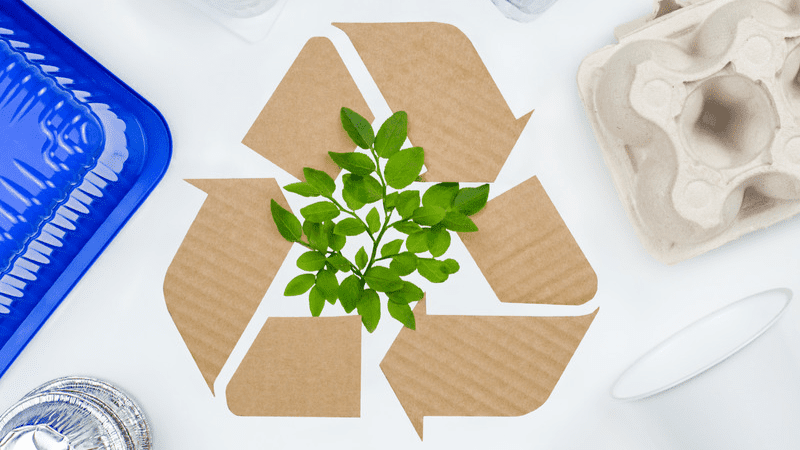
It’s been decades since we first learned about how our plastic consumption has been wreaking havoc on the planet. To reverse that, we’ve come up with different ways to deal with the growing plastic waste.
Recycling is one of them.
It’s just one part of the circular economy concept wherein businesses provide incentives, so consumers are encouraged to either reuse or recycle products and packaging.
The idea of recyclable packaging being turned into a new material seems like an effective way to solve the overflowing landfills.
But if you look at the recycling rates that we’ve had over the years – it’s lower than expected.
Only 9% of the plastic produced since the 1950s has been recycled. Not only that, the idea of “recycled material” made us feel complacent enough to keep producing a massive amount of plastic.
So if you think about it, recycling may have made things worse for us.
Why? Because we failed to recognize 4 important truths.
Not all Plastic Waste Is Recyclable
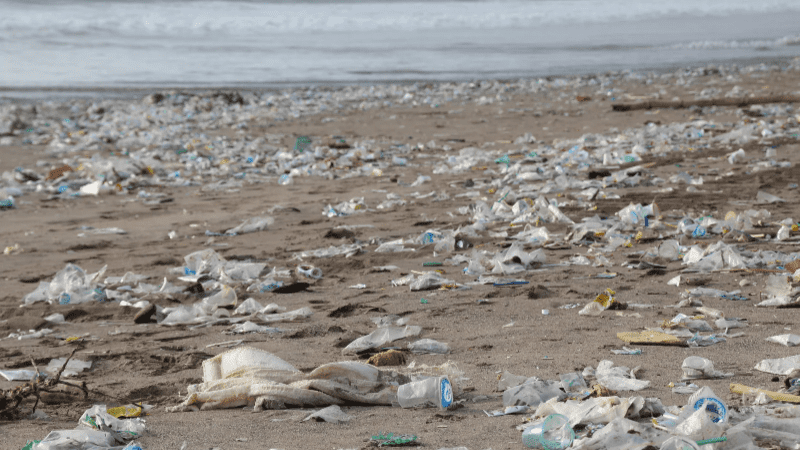
There’s a reason why plastic production has grown over the years. It’s beneficial and cost-effective. Businesses have used plastic bags extensively. You can see plastic containers in every household.
However, plastic packaging is one of the first reasons plastic waste is growing. After all, once the customer gets the product, they have no use for the packaging. It gets thrown away.
That’s the practice that recycling is trying to change. Instead of single-use plastics ending up in landfills, they’re sent to recycling facilities, melting and turning into a new product or material.
But here’s where it gets difficult.
Not all plastic packaging is recyclable. There are 7 types of plastic being used. Of the seven, only 3 are easily recyclable: PET/PETE (Polyethylene Terephthalate), HDPE (High-density Polyethylene), and PP (Polypropylene).
That means a lot of plastic waste doesn’t get recycled. So we need alternatives to plastic packaging.
Those in the Recycling Bin Aren’t Always Recycled
Just because something gets thrown in the bin, that doesn’t mean it gets recycled.
If you put the wrong type of plastic in the bin, it will just be thrown away. Not only that, non-recyclable materials are considered to be “contaminants.”
If a recyclable cardboard packaging with a bit of adhesive on it gets plastic stuck on its surface, guess what?
That cardboard will be thrown away as well. It won’t be recycled because it was contaminated.
This is why proper waste segregation is essential to achieve 100% sustainable packaging.
Recycling Isn’t Always Eco-Friendly
Are All Eco-Friendly Packaging 100% Recyclable? The answer is not. While recycled material is better, it’s not the solution to our environmental problems. You see, the recycling process uses fossil fuels and energy to create new materials.
That means more carbon emissions in the atmosphere to convert recyclable products. In some cases, there’s a higher carbon footprint to recycling materials compared to producing new ones. Not all, but there are instances where it’s more harmful.
Why do we still recycle?
Because at the very least, it preserves our natural resources.
Hopefully, experts can come up with ways to improve the process. Until then, we just have to be careful and ensure that the plastic packaging is recycled.
Some Bioplastics and Compostables Aren’t Being Recycled
One of the solutions to keep plastics from harming our planet further is through biodegradable packaging.
We have bio-based plastic and compostable materials made of plants. These are easily decomposed – at least, compared to plastic.
These materials aren’t always recyclable. Either that or some recycling facilities don’t have the capabilities to break them down.
That’s information that you need to know before you consider using these materials for your packaging.
How Are Different Sustainable Packaging Materials Recycled?
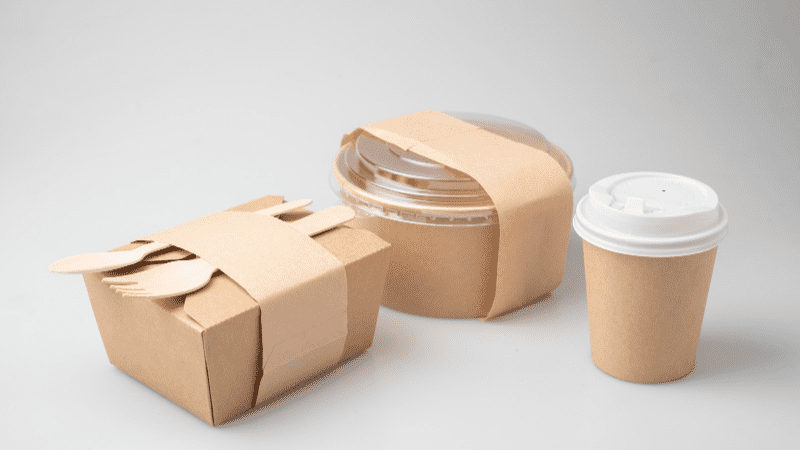
The recycling system generally follows the same process. The first is the collection of the materials to be recycled. Next comes the sorting to ensure that only quality materials will be processed. Then the materials are broken down and filtered. Finally, the materials are shaped and processed into new recycled materials.
The only thing that differs is the criteria by which the materials are chosen and how they are broken down.
Not only that, recycling plants have different criteria in determining what materials they’ll accept or not.
Why do you need to know the recycling process?
Because it’ll help you choose the right materials and design for your sustainable packaging. It ensures that the packaging that you’ll come up with is eco-friendly and will leave a positive impact on the environment.
Let’s take a look at how each of the materials is usually recycled and processed.
Paper and Cardboard Packaging
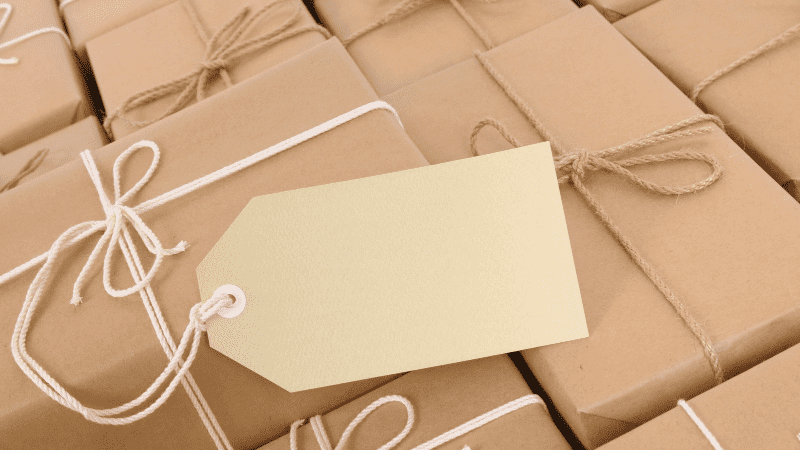
Paper and cardboard are the most eco-friendly packaging material that you can use. It’s flexible, lightweight, and can accommodate any type of product.
When this recyclable packaging is thrown in a recycling bin, it gets collected and sent to a facility. There, the workers will segregate it. They’ll remove any labels, adhesives, etc.
If cardboard packaging has a coating, it has to be removed before it can be recycled. At the same time, if it has print on it, the material has to be bleached before recycling.
Does this mean you have to eliminate the coating and print? Of course not. You just have to find eco-friendly alternatives to make your paper packaging more recyclable.
Stay away from petroleum-based lamination and ink. That’ll get your packaging thrown away without a chance of being recycled.
Plastic Packaging
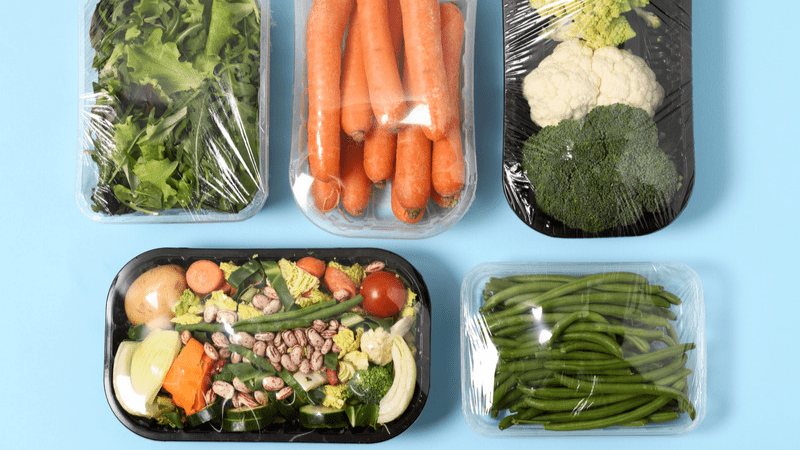
As mentioned earlier in this article, not all plastic packaging can be recycled. Only those made of PET/PETE (Polyethylene Terephthalate), HDPE (High-density Polyethylene), and PP (Polypropylene) are accepted in recycling facilities.
You also can’t mix different types of plastic. When these materials are recycled, they are shredded and ground to form pellets. These are then heated to form new plastic materials.
If different types of plastic are mixed, it will compromise the quality of the new plastic product.
So if plastic bottles, containers, or packaging aren’t labeled properly, the workers in the recycling plant won’t be able to segregate them properly. Your packaging won’t be turned into recycled plastic.
It will just be thrown as plastic waste. That’ll take hundreds of years before they can decompose.
Glass Packaging
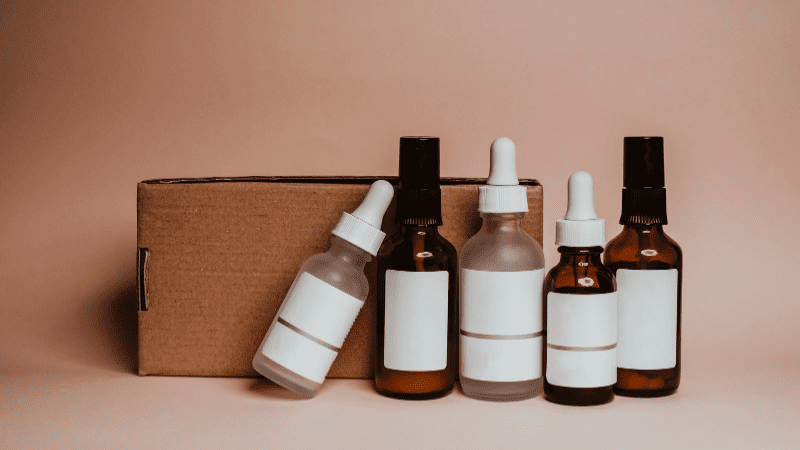
Although glass is delicate, It’s a great recyclable packaging material you can use. At least, if you compare it to a plastic bottle, you’re better off using glass.
Glass is great for avoiding contamination and leakages that can result in a product or food waste. And best of all can be recycled indefinitely without compromising any of its characteristics.
When used as sustainable packaging, it won’t pose any threat to any of our natural resources.
To be recycled, it’s advised that glass bottles or containers are thrown whole. That way, the broken glass won’t cause any harm and it won’t penetrate other recyclables in the bin.
During the recycling process, cullets or glass scraps are checked for purity. If there are contaminants, these are removed. Once it’s sure that they are the same, the cullets are crushed and put in a melting furnace.
The melted glass within is molded into new glass products. One issue about glass is the fact that it requires higher heat to melt compared to plastic. This means it requires more energy to recycle.
To ensure recyclability, don’t mix oven-proof glass with other glass products. These require a higher melting point so they can’t be mixed with other glasses. Drinking glasses are also different so they have to be separated accordingly.
Like plastic, mixing different types of glass can compromise the characteristics of recycled glass material.
Metal Packaging
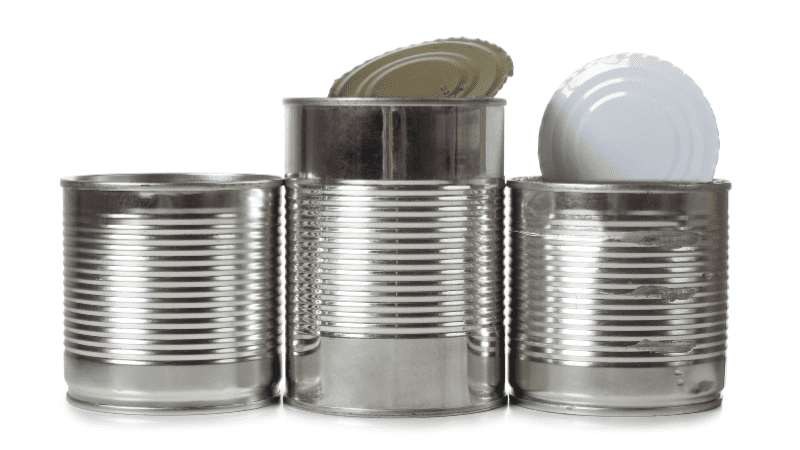
This type of packaging, like glass, helps avoid product and food waste due to contamination and leakage. It can protect contents against liquids, light, and gases.
As a packaging, it’s very flexible. You can mold it in any shape or size.
During the recycling process, it’s drained and cleaned first to remove its contents completely. Some recycling plants want labels to be removed already – but some accept the metal packaging as is. These mustn’t be crushed because they could contaminate the other recyclable items in the bin.
In a recycling center, these are segregated with similar materials. It’s then crushed to form a bale before it’s sent to aluminum recyclers for melting so they can become formed into ingots. These are then sent to manufacturers to be formed into new packaging.
Metal like aluminum can be recycled repeatedly without compromising its original characteristics. Not only that, but it uses less energy to recycle than to create a new one. This is why it’s an ideal recyclable packaging material.
Wood Packaging
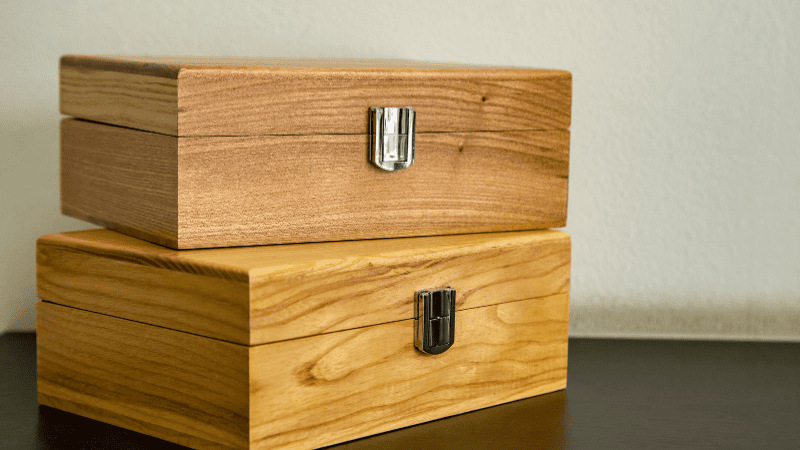
Wood is a sustainable packaging material because it comes from a renewable resource. It’s very durable so you can easily design it to be reusable. With the right shape, size, and design, customers would want to use it as storage or decorative item around their house.
Boxes made of wood are eco-friendly and can be sent to paper mills to be recycled into something new. Apart from paper, it can be turned into boards, mulch, etc.
What compromises wood is the treatment it gets. Usually, wood is treated so it lasts for a long time. The thing is, these treatments are harmful to the environment. So the challenge here is balancing durability with recyclability.
10 Tips When Switching to Packaging with Recyclable Materials
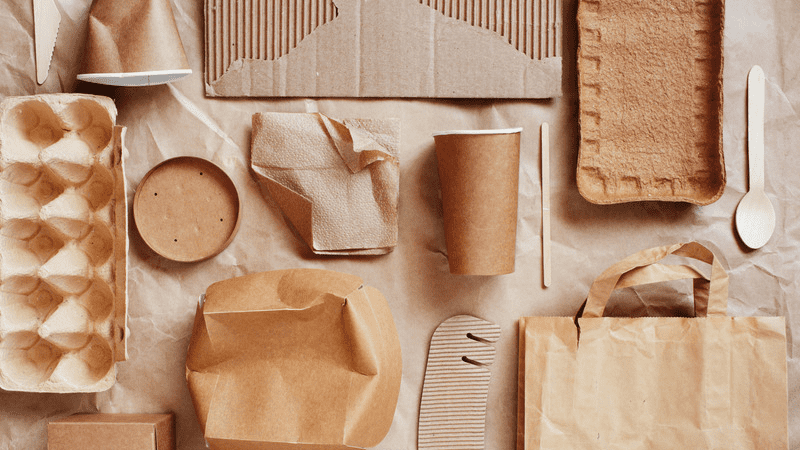
With the knowledge that you have about the recycling process, it’s easier to come up with a packaging design that’ll surely have a positive environmental impact.
You can figure out what materials to combine for your recyclable packaging. If you do it right, you can help your customers practice sustainability as well.
But as you make the switch and design for 100% recyclability, there are a couple of things that you have to consider.
Think About Your Brand and Product
Sometimes, it’s easy to get lost in all the rules and standards surrounding sustainability. While you want to comply strictly, don’t forget about your brand and product.
It doesn’t matter if the raw material is more sustainable than another. What’s important is it can protect and support your product. Not only that, but it should also represent your brand well.
You have to realize that if your sustainability efforts aren’t aligned with your brand, your eco-friendly consumer packaging won’t look authentic. It won’t help you win over customers.
Make sure that as you change your packaging, you continue to stay true to your brand image and product needs.
Remember to Reduce, Reuse, Recycle
A common mistake by some businesses is they focus too much on recycling. They forget that they need to “Reduce, Reuse, Recycle.”
If you notice, recycling is the last option. That means to be truly sustainable, and you should try to reduce your packaging first. Then, make the necessary packaging elements reusable.
Recycling only comes after the packaging is reused.
Think about refillable containers as an example. Encouraging customers to refill empty containers reduces the need to create new packaging. At the same time, you also promote the concept of reusing the same container.
Once the customer feels the container is too worn out, it can be recycled.
Try Plant-Based Materials
Plant-based materials are usually biodegradable. Now, most of these aren’t recyclable – but that doesn’t mean you can’t consider them.
What’s great about this is you’re lessening the load of recycling plants. You can give your customers instructions on using them as compost in their yards.
Just make sure you don’t mix this with other materials that can be recycled. They could contaminate each other to the point of compromising recyclability.
That won’t help you leave a positive environmental impact.
Choose Mono Packaging
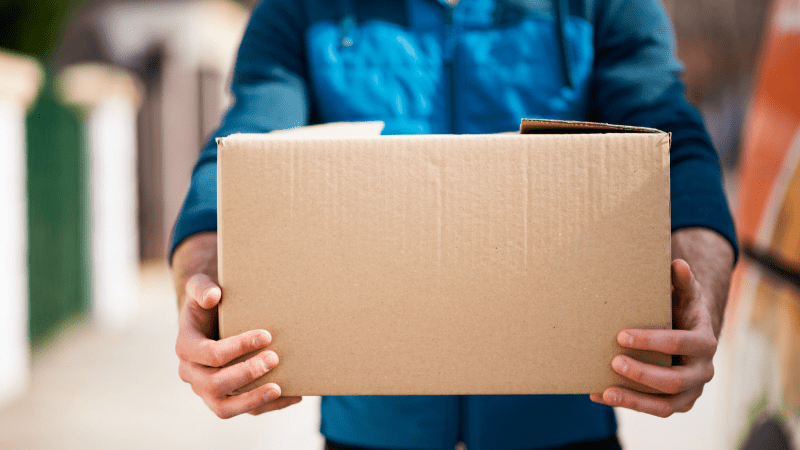
If you noticed, materials of the same composition are the ones that can be recycled together. If you mix different materials, even if they’re all recyclable, the facility won’t be able to process them.
For instance, if you use a metal tin can with a transparent plastic window, the two will have to be separated before they can be processed and recycled.
Two plastic bags made of different types of plastic can’t be recycled together as well.
This doesn’t mean you’re not allowed to use more than one material for your packaging. But at least make sure they can be easily separated.
Like if you’re using a cardboard box for your packaging, use shredded corrugated cardboard of the same material as your filler. That’s one way to practice mono packaging.
Keep It Compact
Sustainability is also about keeping your packaging compact. It’s not just about reducing the size to get more cost-efficient packaging.
It’s about choosing a packaging design that won’t be too heavy or space-consuming when stored or delivered. A smaller and lighter package has a smaller carbon footprint.
When considering the size of your environmentally-friendly packaging, choose a size that fits your product perfectly. As long as it provides the right protection, it should be good enough.
Don’t add too many layers if these are unnecessary.
Opt for Labels and Adhesive that Wash off
When designing for recyclability, keep an eye on other materials, like the labels. Even if you use paper labels on paper packaging, they must be separated before recycling. And if you use an adhesive that uses toxic elements, that can also compromise recyclability.
If you have to use labels, make sure they can easily be removed. Also, the adhesive should be easy to wash off as well.
That way, no residue will be left behind on the packaging.
Consider Resealable Packages
This will help you practice the “Reduce, Reuse, Recycle” approach. Resealable packages allow customers to consume a product at their own pace. They don’t have to get another container to hold the product in.
It can stay in the same package that it came in.
These reusable containers allow customers to reduce their waste. Of course, the reusability of these packaging solutions will depend on the design.
There are resealable packages that look like pouches. Or boxes with interlocking designs so you can close them. Either way, it’s a great contribution to being more environmentally friendly.
Avoid Double Packaging
There are times when using double packaging is a must to protect fragile products. Or if your product packaging design has elements that you need to protect from scratches, then putting a box in a box could make sense.
But only go down this route if it’s necessary.
Because if you use double packaging, it won’t just make your packaging costs higher. It’ll also affect your carbon footprint. Not to mention the packaging waste that’ll result from it.
So if you don’t have to, stick to just one box and make it sturdy enough to protect your product.
Be on the Look-Out for New Alternatives
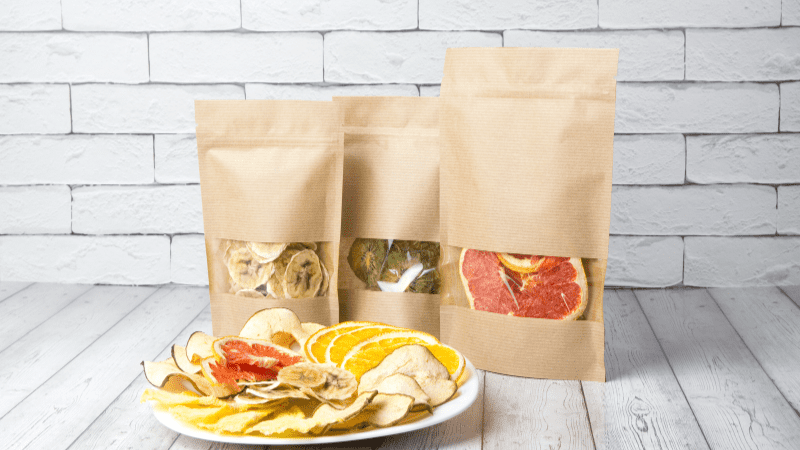
Even if you think you’ve found the right eco-packaging solutions for your product, don’t stop there. The circular economy is gaining strength as it gets more support from local governments.
That means more people will be invested in finding better sustainable packaging options.
Because that’s what sustainability is all about. It’s about innovation and constant improvement. It means finding better ways to recycle more products and packaging.
It means getting better at creating the best offer without compromising the environment for the younger generations.
Get It from the Right Source
Do you know what guarantees that you can design packaging that’s 100% recyclable?
You have to get it from the right source. Companies who practice sustainability and are certified for it knows how to process and provide the right materials for your packaging.
They’ll also ensure that the sustainable materials are properly labeled so they won’t compromise recyclability.
But there’s a warning here. Make sure the claims of the supplier you’re working with are legitimate. Some say they’re sustainable, but they can’t show proof.
Stick to those packaging with an FSC certificate and similar green business certifications. That’s how you can be sure that you’re getting quality materials.
4 Ways to Encourage Customers to Recycle Packaging
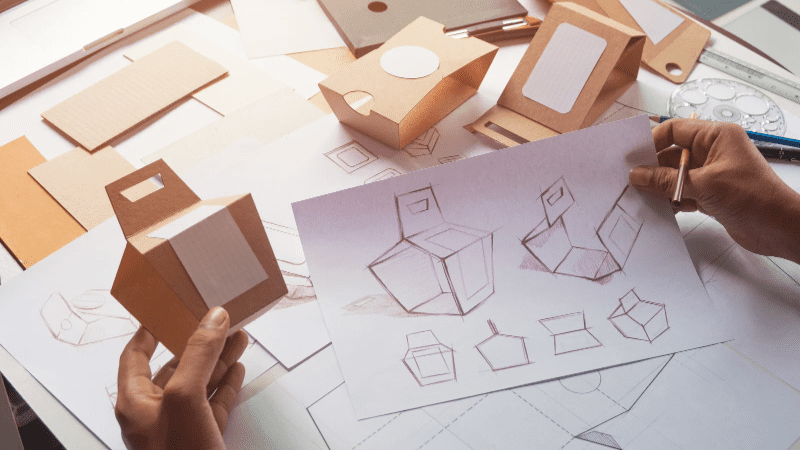
This is what a lot of companies miss. They think that just because they created recyclable packaging, that’s already good enough.
It’s not.
Your packaging will be useless if your customers won’t follow through. It’s up to you to encourage consumers to practice recyclability through your packaging.
How? Here are some tips to help you encourage them.
Educate Your Customers About Sustainability
If you want your customers to understand recycling better, educate them about sustainability.
They have to understand that recycling is just a part of a greater movement to be sustainable. The more they know about sustainability and the circular economy, the more they’ll appreciate the importance of recycling your packaging.
It’ll motivate them to ensure that they do their part in the recycling process.
Make Quality Marks Visible
Be very clear with your instructions on how your customers should recycle your packaging. If you used non-recyclable packaging materials, they have to know what it is.
For instance, you use cardboard boxes with packaging peanuts. If the fillers aren’t recyclable, your customers should be aware of that. Or if you used 2 different types of plastic, make sure they are also aware of it.
This way, they’ll know how to throw them away properly without contaminating each other.
Use the right logos and labeling to inform customers of what they need to know.
Teach Them About Waste Separation
There’s a reason why you need to teach your customers about sustainability and familiarize them with the quality marks in your packaging.
They have to learn how to segregate waste properly.
Remember, your customers are the last to touch your packaging before it’s sent out to be recycled. Make sure you give them the right guidelines so they won’t compromise the recyclability of your packaging materials.
Make Recycling Convenient
Finally, you must ensure that your recycling instructions are clear and easy to follow. If the details won’t fit your packaging, put a QR code or link where customers can get more information.
Don’t make it complicated and try to ensure that if materials need to be removed, it can be easily done.
Waste management is an effort that we all have to bear. Share as much information as you can so we can all get into the practice of being more sustainable.
Make Your Packaging 100% Recyclable. Packoi Printing Can Help You Design the Right Recyclable Packaging.
There are many ways to make your packaging 100% recyclable. Knowing the best option starts through education.
Invest in your learning so you can share what you know with your customers.
If you want to know more about recyclable materials, visit Packoi Printing‘s website. We are FSC-certified to provide sustainable materials for packaging. You’ll get the best chance at being sustainable with us.
Get in touch with us so we can design the best recyclable packaging that’ll fit your brand. Call us for a quotation.




